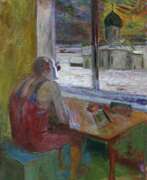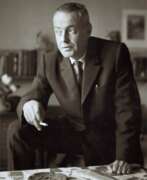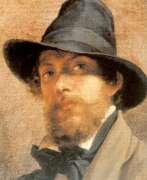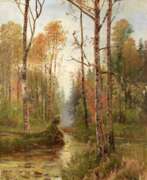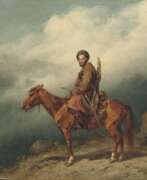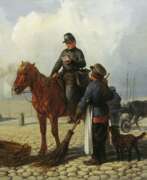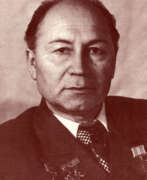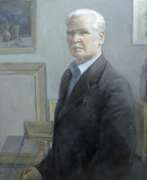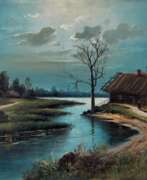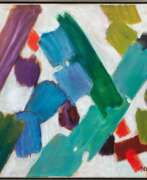Painters Russian school
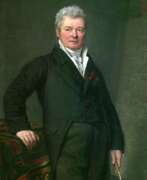

Fyodor Yakovlevich Alekseyev (Russian: Фёдор Яковлевич Алексеев) was a Russian painter born around 1753 in Saint Petersburg. Known as the "Russian Canaletto" for his masterful vedute, or detailed paintings of cityscapes, Alekseyev made significant contributions to Russian art, particularly in depicting urban landscapes.
Alekseyev was admitted to the Imperial Academy of Arts in 1764, where he initially studied ornamental sculpture and scenic painting under Antonio Peresinotti. He spent several years in Venice, funded by a fellowship, where he studied theater painting but preferred creating landscapes and copying works by old masters. Upon his return to Russia, he faced restrictions but gradually gained recognition for his independent work. His notable painting "View of the Palace Embankment from the Fortress" earned him the title of Academician in 1794.
In 1800, Tsar Paul I commissioned Alekseyev to paint the streets and architecture of Moscow, resulting in numerous significant works that highlighted the city's grandeur. Despite a decline in fame later in life, his contributions to Russian urbanscape painting remain influential, with works such as "Red Square" and "The Flood of 1824 in the square at the Bolshoi Kamenny Theatre" held in major Russian museums like the State Russian Museum and the Tretyakov Gallery.
For updates on sales and auction events related to Fyodor Yakovlevich Alekseyev, sign up for our newsletter.
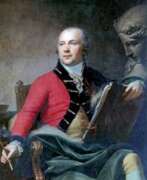

Ivan Akimovich Akimov (Russian: Иван Акимович Акимов) was a Russian painter celebrated for his contributions to the Classical and Neoclassical styles of art. Born into a family of a typographer for the Governing Senate, Akimov's journey into the arts began early when, after his father's death, he penned a heartfelt letter to the Imperial Academy of Arts. This letter secured his admission, marking the start of his lifelong association with the Academy, where he evolved from a student to its director.
Akimov's education at the Academy was marked by numerous awards, including gold medals for his artworks, showcasing his burgeoning talent in painting. His artistic journey took him to Italy on a fellowship, where, despite initial challenges, he found mentorship under Pompeo Battoni and was inspired by the Venetian masters. This period was instrumental in shaping his skills and artistic outlook.
Throughout his career, Akimov was revered not just for his artistic output but also for his contributions to art education and historiography in Russia. He played a pivotal role at the St. Petersburg Academy of Arts, ultimately serving as its director. Akimov's legacy extends beyond his paintings, through his influence on future generations of artists and his foundational work in Russian art historiography. Among his notable works are "Prometheus Making a Statue at the Command of Minerva" and "The Baptism of Princess Olga in Constantinople", which reflect his classical influences and historical interests.
For those interested in exploring Ivan Akimovich Akimov's works and legacy, signing up for updates on new product sales and auction events related to Akimov could provide valuable insights and opportunities to connect with his art. This subscription ensures you stay informed about the latest discoveries and offerings in the world of Russian classical painting.
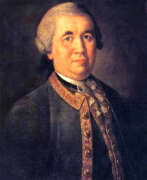

Alexei Petrovich Antropov (Russian: Алексей Петрович Антропов), a prominent Russian painter of the Baroque period, is celebrated for his significant contributions to art, particularly in portrait painting and church frescoing. Born into a family connected to the governmental sphere, Antropov's early exposure to the arts came through his work in the Chancellory of Buildings, where he began his career under the guidance of various Russian and foreign artists, including Andrey Matveyev and Ivan Vishnyakov.
Antropov's work is distinguished by his mastery in oil painting, miniatures, and icons, with a career that saw him active mainly in St. Petersburg, Moscow, and Kiev. His artistic journey was notably influenced by his studies with the French court painter Louis Caravaque and later with the Italian painter Pietro Rotari, which helped him refine his portrait artistry. The 1760s emerged as his most productive period, where he crafted numerous notable portraits, including those of Elizabeth Petrovna and Peter III of Russia, showcasing his preference for traditional icon and parsuna portrait styles characterized by sharp contrasts and dark backgrounds.
Antropov's legacy extends beyond his artworks; his dedication to art education and the community is evident in his decision to transfer his only house to the Department of Education for the establishment of a Free School. He passed away in 1795, leaving behind a rich collection of works that continue to be celebrated in museums such as the Tretyakov Gallery in Moscow and the Russian Museum in St. Petersburg.
Collectors and art experts value Antropov for his unique contributions to Russian art, his role in the transition of portrait styles, and his influence on future generations of artists, including his apprentice Dmitry Levitzky. His works, including the portraits of Catherine II and Archbishop Gavriil Petrov, are pivotal in understanding the artistic and cultural shifts of 18th-century Russia.
For those interested in exploring the depths of Russian Baroque art and the significant figures who shaped its contours, Alexei Petrovich Antropov's oeuvre offers a fascinating journey. Collectors and aficionados are encouraged to sign up for updates on new product sales and auction events related to Antropov's works, ensuring they remain informed about opportunities to own a piece of this illustrious artist's legacy. This subscription is a gateway to the vibrant world of art collection, where the beauty of the past is preserved for the future.
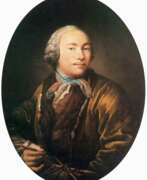

Ivan Petrovich Argunov (Russian: Иван Петрович Аргунов) was a distinguished Russian painter of the 18th century, celebrated for his significant contribution to portrait art. As a serf born into the Argunov family, who were established artists themselves, Ivan's talent was nurtured and supported by his patrons, leading to a unique position within the cultural and artistic hierarchies of his time. His specialization in portraiture allowed him to capture the essence of Russia's social elites, including members of the imperial family, as well as ordinary Russians, thereby providing a wide-ranging visual documentation of the era's societal strata.
Argunov's art is noted for its meticulous attention to detail, vibrant realism, and the emotional depth he brought to his subjects. His portraits are more than mere representations; they are intimate glimpses into the lives and characters of his sitters. Among his most famous works is the portrait of Princess Natalia Petrovna Golitsyna, showcased in the Tretyakov Gallery in Moscow. This particular piece stands out for its intricate portrayal of fabric textures and the detailed rendering of facial expressions, which have been lauded for their lifelike quality and depth.
Argunov's legacy extends beyond his artistic achievements; he played a pivotal role in shaping the course of Russian portraiture. His works are preserved in major museums and galleries across Russia, serving as a testament to his skill and the cultural richness of his time. For collectors and experts in art and antiques, Argunov's paintings are not just historical artifacts but are cherished for their aesthetic value and the insight they offer into 18th-century Russian culture.
We invite enthusiasts and collectors to stay connected with us for updates on new product sales and auction events related to Ivan Petrovich Argunov. By signing up, you will gain exclusive access to the finest pieces of Russian art and antiques, ensuring you never miss an opportunity to enrich your collection with works by one of Russia's most esteemed artists.
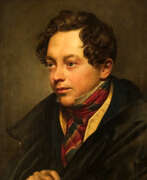

Pyotr Vasilievich Basin (Russian: Пётр Васильевич Басин) was a Russian painter, born in 1793 and passed away in 1877, renowned for his large-scale religious, historical, and portrait artworks. A distinguished member of the Imperial Academy of Arts in Saint Petersburg, Basin's career was marked by a significant period in Rome, where he studied under a fellowship and produced nearly a hundred paintings.
Basin's artistic legacy includes notable works such as the allegorical figures for the Winter Palace and several religious scenes for the Saint Isaac's Cathedral and Kazan Cathedral. His contributions extend to teaching roles at the Imperial Academy, where he influenced future generations until his retirement due to a progressive eye disease.
Basin's works are prominently displayed in the Russian Museum among other locations, serving as a testament to his skill and dedication to the arts. For collectors and enthusiasts looking to explore more about Basin's works or receive updates on sales and auctions featuring his art, signing up for specialized newsletters can provide timely and exclusive information.
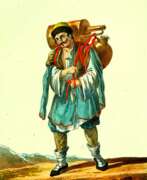

Karl Petrovich Beggrov (Russian: Карл Петрович Беггров) was a Russian artist known for his exceptional lithographs and watercolor paintings. Born in 1799, Beggrov studied at the St. Petersburg Academy of Arts under M.N. Vorobyov and later worked in his brother's lithographic workshop. His talent spanned various art forms, including portraits, landscapes, and cityscapes, which captured the essence of 19th-century St. Petersburg.
Beggrov's work is particularly celebrated for its detailed and vivid portrayals of St. Petersburg. His series "Views of St. Petersburg and Its Environs," created between 1821 and 1826, remains one of the most significant contributions to early Russian lithography. These works were a collaborative effort with other artists, yet Beggrov's distinctive style is evident in the 28 lithographs he produced for the series.
Several of Beggrov's artworks are housed in major museums, including the Metropolitan Museum of Art. Notable pieces like "Our Lady of Vladimir Church in St. Petersburg" and "View of the Arch of the General Staff Building Towards the Winter Palace" showcase his mastery of lithography and his ability to convey architectural grandeur with precision.
For collectors and art enthusiasts, staying updated on Karl Petrovich Beggrov's works is essential. Subscribe to our updates for notifications on new product sales and auction events related to Beggrov's art.
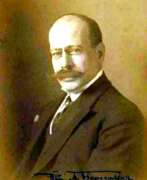

Richard Bergholz (Russian: Ричард Александрович Берггольц) was a Russian painter known for his remarkable landscape works. Born in 1865 in St. Petersburg, he studied at the Academy R. Julien in Paris and later in Düsseldorf and the Imperial Academy of Arts in Russia. Bergholz is celebrated for his lyrical landscapes, often depicting the changing seasons with a focus on light and atmosphere.
Bergholz's technique predominantly involved watercolor and ink, and his works were well-received in numerous exhibitions throughout Russia and Europe. He was a member and chairman of the Society of Russian Watercolors and one of the founders of the Society of Artists named after A. I. Kuindzhi.
Some of Bergholz's notable works, such as "Golden Autumn" and "A Beach at Low Tide," are housed in prestigious collections, including the State Tretyakov Gallery and the State Russian Museum.
For more updates on Richard Bergholz's works and related auction events, sign up for our newsletter to stay informed about new product sales and auction events.
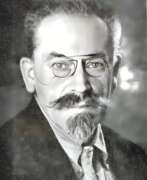

Boris Vasilievich Bessonov (Russian: Борис Васильевич Бессонов) was a Russian painter, born in 1862 and passed away in 1934. Renowned for his contributions to Russian Academic Art, Bessonov is celebrated for his captivating landscapes and rural scenes that often depicted the serene beauty of the Russian countryside
Bessonov's work is characterized by meticulous attention to detail and a profound ability to capture the changing seasons and atmospheric conditions. His paintings, such as "Park in Autumn" and "Winter Landscape," reflect a deep appreciation for nature's tranquility and the subtle nuances of light and shadow. These pieces exemplify his skill in rendering the natural world with both realism and a poetic touch.
His art has been exhibited in prestigious institutions, including the Musée d'Orsay, which holds some of his notable works. Bessonov's paintings frequently appear at auctions, demonstrating a sustained interest and admiration for his work among collectors and art enthusiasts.
For collectors and experts interested in Boris Vasilievich Bessonov's works, subscribing to updates about new product sales and auction events can provide valuable insights and opportunities. Sign up to stay informed about upcoming sales and exhibitions featuring Bessonov's masterpieces.


Joseph-Casimir Konstantinovich Budkevich (Russian: Иосиф-Казимир Константинович Будкевич) was a Ukrainian painter and draftsman, born on April 18, 1841, in Kyiv. Known for his battle scenes and landscapes, Budkevich studied at the Imperial Academy of Arts in Saint Petersburg, where he received several medals for his works. In 1873, he was awarded the title of Class Artist 3rd Degree.
Budkevich traveled to Italy, France, Spain, and Palestine to refine his skills. In the late 1870s and 1880s, he taught at the Kyiv Drawing School, where one of his students was Mykola Pymonenko. From 1887 to 1895, he was a member of the Kyiv Society of Art Exhibitions.
Among his notable works are "Pilgrim at the Monastery Wall" (1883) and "Jerusalem" (1894). These paintings are exhibited at the Kyiv Museum of Russian Art and the Pskov Art Gallery. His work is highly valued by collectors and art experts for its uniqueness and mastery.
If you want to receive notifications about new arrivals and auctions related to Joseph-Casimir Budkevich's work, subscribe to our updates. We will keep you informed about new sales and events related to his legacy.
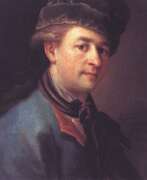

Pyotr Semyonovich Drozhdin (Russian: Пётр Семёнович Дрождин) was a Russian artist, renowned for his unique contributions to painting and sculpture. His work, characterized by its emotional depth and striking realism, has captivated art enthusiasts and collectors worldwide.
Drozhdin's art is a blend of classical Russian techniques with modernist twists, making each piece distinctly timeless yet contemporary. His paintings often depicted rural Russian life and landscapes, imbuing them with a sense of nostalgia and profound beauty. Meanwhile, his sculptures are noted for their intricate detailing and the ability to capture the human spirit.
His works are displayed in various prestigious galleries and museums, not only in Russia but around the globe. They continue to attract admiration for their craftsmanship and artistic integrity.
For those keen on exploring more about Pyotr Semyonovich Drozhdin or adding a piece of his legacy to their collections, staying updated on exhibitions and auction events is essential. Sign up for updates on sales and exhibitions featuring Drozhdin's works to ensure you never miss an opportunity to own a piece of Russian art history.
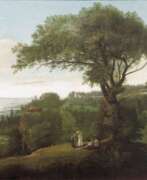

Yermolai Ivanovich Esakov (Russian: Ермолай Иванович Есаков) was a Russian painter, renowned for his landscape and battle scenes. Born in 1790, Esakov studied at the Imperial Academy of Arts under M. M. Ivanov and graduated in 1809. He gained recognition for his painting "Waterfall in a Mountainous Area," which earned him a gold medal and a position as a pensioner at the Academy.
Esakov worked as a domestic artist for the Stroganov family from 1810 to 1824. During this period, he accompanied Count P. A. Stroganov to Moldova during the Russo-Turkish War, where he painted "Russian Camp near Silistra." This work earned him the title of Academician at the Imperial Academy of Arts.
Esakov's paintings are characterized by their detailed representation of nature and historical events, showcasing his skill in capturing both the serene and the dramatic. His works are housed in various Russian museums, continuing to attract art lovers and collectors.
Stay informed about new product sales and auction events related to Yermolai Ivanovich Esakov by signing up for our updates.
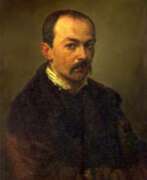

Pavel Andreyevich Fedotov (Russian: Павел Андреевич Федотов), a pioneering Russian realist painter, was born on July 4, 1815, in Moscow, Russia. He is celebrated as the founder of Russian genre painting and critical realism, capturing the essence of Russian society with sharp satire and insight. His works, including notable pieces like "The Major's Marriage Proposal" and "The Gamblers," reflect a keen observation of social conditions and human interactions, often infused with humor and moral critique.
Fedotov's artistic journey began in the military, where he served as an officer before fully dedicating himself to art. His transition from military life to art was marked by his attendance at the Imperial Academy of Arts in St. Petersburg. Initially working with pencil and watercolor, he later shifted to oils in 1846, a medium through which he achieved great success and recognition.
Tragically, Fedotov's life was cut short when he died in a mental clinic in 1852 at the age of 37, following a period of intense psychological distress. Despite his brief career, his legacy lives on, influencing future generations of Russian artists and continuing to captivate audiences with his vivid portrayals of 19th-century Russian life.
For those interested in exploring the profound depth and enduring impact of Fedotov's work, signing up for updates on exhibitions and auctions of his art could provide valuable insights and opportunities to engage with his masterpieces.


Nikolai Nikolaevich Ge (Russian: Николай Николаевич Ге) was a distinguished Russian painter, whose contributions to the world of art are celebrated for their emotional depth and philosophical introspection. Born in 1831, Ge's work spans a variety of themes, including religious, historical, and psychological subjects, making him a versatile artist in the realm of 19th-century Russian culture. His paintings are known not just for their aesthetic appeal but also for their ability to provoke thought and evoke deep emotions.
Ge's art is marked by its intense exploration of moral and spiritual questions, distinguishing him from his contemporaries. One of his most famous works, "The Last Supper" (1863), showcases his ability to infuse traditional religious scenes with a new level of emotional intensity and humanism. This painting, along with others like "Christ in the Garden of Gethsemane" (1868), reflects Ge's deep engagement with the themes of suffering, redemption, and the human condition. His approach to these universal subjects has earned him a special place in the canon of Russian art, making his works highly sought after by collectors and experts in art and antiques.
Ge's contributions to art extend beyond his individual works. His commitment to portraying the human experience with honesty and depth has influenced generations of artists. His paintings can be found in prestigious galleries and museums, serving as a testament to his enduring legacy. For collectors and art aficionados, Ge's work represents not only an investment in Russian culture and history but also an ongoing exploration of the depths of human emotion and spirituality.
For those interested in the profound and moving art of Nikolai Nikolaevich Ge, staying informed about new discoveries, sales, and auction events related to his work is essential. Sign up for updates to ensure you never miss an opportunity to engage with the legacy of this remarkable artist. This subscription will exclusively alert you to new product sales and auction events related to Nikolai Nikolaevich Ge, keeping you connected to the very best of Russian art and culture.
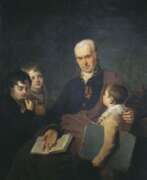

Kirill Ivanovich Golovachevsky (Russian: Кирилл Иванович Головачевский) was a Russian artist and graphic designer, best known for his role as an inspector at the Imperial Academy of Arts in St. Petersburg from 1771-1773 and 1783-1823. Born on May 27, 1735, in Korop, Russian Empire, he initially joined the Kiev Theological Academy but was later sent to St. Petersburg as a court chorister. Under the patronage of Empress Catherine II, Golovachevsky studied painting with Ivan Petrovich Argunov alongside his fellow choristers.
Though not considered a leading artist of his time, Golovachevsky contributed significantly to the Russian art scene through his portraits and historical paintings. His career at the Academy spanned over four decades, where he played a pivotal role in developing the institution's educational programs and nurturing the next generation of Russian artists.
Golovachevsky's works, such as the portrait of Elizabeth Sofie Albertine von Graevenitz, have been recognized in the art market, reflecting his skill in portrait art despite the criticisms of his contemporaries regarding his artistic abilities.
For collectors and art experts interested in Russian art and antiques, staying informed about updates and auction events related to Kirill Ivanovich Golovachevsky can provide valuable insights into this historical artist's contributions. Sign up for updates to ensure you don't miss out on new discoveries and sales related to his works.
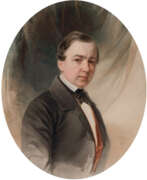

Woldemar Hau (Russian: Владимир Иванович Гау) was a Baltic German portrait painter, renowned for his contributions to the Biedermeier style, a period marked by a sense of realism and simplicity in art. Born in 1816 in Tallinn, then part of the Russian Empire, he was trained under the guidance of his father, Johannes Hau, and the distinguished artist Karl von Kügelgen. Hau's remarkable talent became evident early on when, at just sixteen, he was recommended to paint for the Russian Imperial Court, leading to his appointment as a Court Painter.
During his illustrious career, Hau captured the visages of the Russian nobility, including Tsar Nicholas I and Tsarina Alexandra Fyodorovna, alongside other key figures of his time. His works, often characterized by their intricate detail and vibrant realism, include over 200 miniature portraits of the Izmaylovsky Regiment veterans. His most celebrated works are preserved in prestigious collections and reflect his mastery in both watercolours and miniatures on ivory.
For those interested in exploring the legacy of Woldemar Hau, his paintings are a fascinating window into the cultural and historical nuances of 19th-century aristocratic Russia. To stay updated on exhibitions and auctions featuring Hau's work, I encourage you to sign up for updates. This subscription will keep you informed about new sales and auction events specifically related to Woldemar Hau.


Alexander Andreevich Ivanov (Russian: Алекса́ндр Андре́евич Ива́нов) was a distinguished Russian artist, celebrated for his profound contributions to the world of painting during the 19th century. His works are notable for their depth of emotion, meticulous attention to detail, and the profound thematic exploration of religious and mythological narratives. Ivanov's paintings are a testament to his dedication to exploring the spiritual and the sublime, making significant impacts on the culture and art of his time.
Ivanov's magnum opus, "The Appearance of Christ Before the People," stands as a beacon of his artistic legacy. This masterpiece, which took two decades to complete, showcases his exceptional skill in composition, his innovative use of color, and his ability to imbue his subjects with a deep sense of spirituality and humanity. The painting is housed in the State Tretyakov Gallery in Moscow, where it continues to inspire and move viewers with its portrayal of a pivotal biblical moment.
Beyond this monumental work, Ivanov's oeuvre includes a range of paintings and sketches that delve into biblical stories, mythological scenes, and landscapes, each marked by his distinctive touch and thoughtful approach to the canvas. His influence extends beyond the immediate sphere of Russian art, contributing to broader discussions and developments within the European art community of his time.
For collectors and experts in art and antiques, Ivanov's work represents a pivotal intersection of religious, cultural, and artistic exploration. His paintings are not only visually stunning but also rich in symbolic depth, offering layers of meaning to be discovered and interpreted.
We invite those with a keen interest in the intersection of culture, art, and history to sign up for updates on new product sales and auction events related to Alexander Andreevich Ivanov. This subscription is an opportunity to stay informed about the availability of works by this profound artist and to engage with the vibrant market for Russian art and antiques. Join us in exploring the legacy of one of Russia's most revered painters and the continued relevance of his work in the contemporary art world.
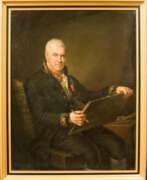

Mikhail Matveevich Ivanov (Russian: Михаил Матвеевич Иванов) was a Russian painter and watercolorist, born in 1748 in St. Petersburg. He is recognized for his landscape and battle scene paintings. Ivanov's early training was at the Imperial Academy of Arts, where he studied under Ivan Groot and later, Jean-Baptiste Le Prince in Paris. His works often depicted detailed landscapes and significant historical events.
Ivanov earned acclaim for his watercolors and drawings, many of which are housed in the State Russian Museum and the Hermitage Museum. Notable works include "View of Three Churches Against the Backdrop of Mount Ararat" and "Russian Fleet in the Bosphorus Strait".
Collectors and art enthusiasts highly regard Ivanov's contribution to Russian art, particularly his ability to capture the essence of the landscapes and historical moments of his time. To stay updated on new works and auction events related to Mikhail Matveevich Ivanov, sign up for our updates.


Yermolai Dementievich Kamezhenkov (Russian: Ермолай Дементьевич Камеженков) was an esteemed Russian artist, born in 1760 into serfdom in Tver. His early education in icon painting was under Dmitry Kryzhov, after which his talents brought him to St. Petersburg for further study with Gavriil Kozlov. Kamezhenkov's skills caught the attention of Catherine the Great, who, impressed by his work, emancipated him from serfdom in 1786.
Kamezhenkov's artistry was predominantly in portraiture, where he was noted for his subtle color harmonies and insightful character depiction. His works include notable portraits such as "Portrait of I. P. Groot" (1788) and "Portrait of an Unknown Man in a Purple Robe" (1790), which are held in high regard for their elegant color schemes and expressive depth. He became an Academician in 1794, an acknowledgment of his significant contributions to Russian art.
Living and working in cities like Moscow and Kashin, Kamezhenkov left a legacy that includes a rich collection of paintings, each preserving a piece of Russian history and culture through its vivid portrayal of its subjects. His works, such as the "Portrait of the Artist's Daughter with a Babysitter" (1808), are cherished not only for their artistic merit but also for their historical significance.
If you're intrigued by the story of Yermolai Dementievich Kamezhenkov and wish to explore more about his works and their impact on Russian art, consider signing up for updates on exhibitions and sales related to his works. This subscription is a great way to stay informed about special events and auction opportunities concerning Kamezhenkov's art.


Orest Adamovich Kiprensky (Russian: Орест Адамович Кипренский) emerged as a masterful Russian portraitist in the Age of Romanticism. His journey from an illegitimate serf background to a celebrated artist is a testament to his extraordinary talent and determination. Kiprensky's early exposure to art at the St. Petersburg Academy of Arts paved the way for his signature style, marked by emotional depth and technical brilliance.
Orest Kiprensky's works resonate with the spirit of Romanticism, capturing the essence of his subjects with remarkable sensitivity and nuance. His portrait of Alexander Pushkin is among his most famous, celebrated for its vivid portrayal of the poet's character. Kiprensky's life was as dramatic and varied as his art, with significant periods spent in Italy, where he immersed himself in the local culture and art scene, eventually marrying and converting to Roman Catholicism.
His legacy is enshrined in numerous galleries, where his portraits continue to captivate audiences with their expressive intensity and elegance. Orest Kiprensky's ability to capture the soul of his subjects on canvas ensures his enduring status as a pivotal figure in Russian Romantic art.
For those fascinated by Orest Kiprensky's life and work and keen on updates related to his art, including exhibitions and sales, subscribing to relevant updates can provide valuable insights into the world of this distinguished portraitist.


Arkhip Ivanovich Kuindzhi (Russian: Архип Иванович Куинджи) was a Russian landscape painter of Greek descent, celebrated for his pioneering use of light and color to evoke dramatic atmospheres. Born into a shoemaker's family in Mariupol, Ukraine, Kuindzhi faced early hardships, including the loss of his parents at a young age. Despite these challenges, his passion for art led him to Saint Petersburg, where he largely taught himself to paint, although he briefly studied at the St. Petersburg Academy of Arts and was influenced by the renowned marine artist Ivan Aivazovsky.
Kuindzhi's work stands out for its innovative approach to capturing the natural world, particularly his use of light to create mood and atmosphere. His paintings, such as "Moonlit Night on the Dnieper" (1880), "The Birch Grove" (1879), and "Red Sunset on the Dnieper" (1905–1908), demonstrate his skill in portraying the luminous qualities of the landscape, often with a dramatic and almost mystical quality. His landscapes are not just representations of nature but are imbued with a sense of the sublime, reflecting his lifelong interest in the scientific and philosophical studies of light and perception, a curiosity partly nurtured through his friendship with the chemist Dmitri Mendeleev.
Despite achieving significant acclaim, including the patronage of notable figures like Pavel Tretyakov, Kuindzhi withdrew from public life at the peak of his career. This withdrawal, however, did not diminish his impact on the art world; he continued to influence future generations as a professor at the St. Petersburg Academy of Arts, where he taught artists such as Nicholas Roerich and Arkady Rylov. His commitment to art and education culminated in the formation of the Society of Artists, which was later named in his honor.
Kuindzhi's legacy is preserved in major institutions like the State Russian Museum and the Tretyakov Gallery, where his masterpieces continue to inspire awe and admiration. His works offer a window into the soul of the Russian landscape, reflecting a blend of his Greek, Tatar, Ukrainian, and Russian heritage.
For art collectors and experts, Kuindzhi's paintings represent not only aesthetic beauty but also the rich cultural and historical contexts from which they emerged. His innovative techniques and the emotional depth of his work continue to captivate audiences, making him a pivotal figure in the world of landscape painting.
To stay informed about new product sales and auction events related to Arkhip Ivanovich Kuindzhi, consider signing up for updates. This subscription is an excellent opportunity for collectors and art enthusiasts to engage with the ongoing legacy of this remarkable artist.
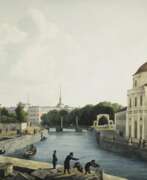

Andrey Efimovich Martynov (Russian: Андрей Ефимович Мартынов) was a Russian painter and engraver, known for his landscapes and lithographs. Born in 1768 in St. Petersburg, he graduated from the Imperial Academy of Arts in 1788. Martynov studied landscape painting under Semion Shchedrin and further honed his skills in Italy from 1788 to 1794, under the influence of Jakob Philipp Hackert. His Italian landscapes were highly appreciated upon his return to Russia, leading to his appointment as an academician in 1795.
Martynov’s work is renowned for its idealized and panoramic views of nature. He traveled extensively, capturing the beauty of rural Russia, Siberia, and Mongolia in his watercolors and lithographs. His series "Views of Russia and Mongolia" and "Peoples Types of Russia and Mongolia" are particularly admired for their detail and artistic quality. Martynov was also the official artist of the Russian embassy to China in 1805, a role that further enriched his portfolio with diverse cultural landscapes.
In addition to painting, Martynov contributed significantly to the development of lithography in Russia. His works, including scenes from the Crimea, the Baltic States, and the Volga River, are preserved in various museums, such as the Russian Museum and the Museum of the Academy of Fine Arts. Martynov’s legacy lies in his ability to blend classical composition with the celebration of natural beauty, making his works a valuable part of Russian art history.
To stay updated on new arrivals and auction events related to Andrey Efimovich Martynov, sign up for our updates. This subscription will only notify you about new product sales and auction events.
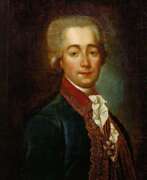

Leontiy Semenovich Miropolskiy (Russian: Леонтий Семёнович Миропольский) was a Russian painter, portraitist, copyist, and icon painter, prominent in the late 18th and early 19th centuries. He became an academician of the Imperial Academy of Arts after demonstrating his skills with a portrait of Gabriel Ignatievich Kozlov, an adjunct professor at the academy. His works include portraits that are highly individualized and closely resemble those of his teacher, Dmitry Levitsky.
Miropolskiy's contributions to Russian art extend beyond portraits; he was also an accomplished icon painter. He crafted icons for St. Andrew's Cathedral in Kronstadt, which, although the cathedral itself has since been destroyed, marks a significant part of his legacy in religious art. His paintings are housed in prestigious locations such as the State Russian Museum and the State Tretyakov Gallery, reflecting his lasting impact on Russian cultural heritage.
For art collectors and enthusiasts interested in exploring more about Miropolskiy's works or potential acquisition opportunities, consider signing up for updates related to his paintings. This subscription will keep you informed about new discoveries and auction events specifically tied to Miropolskiy's artistry.


Vladimir Ivanovich Moshkov (Russian: Владимир Иванович Мошков) was a Russian painter born in 1792 in Moscow. He was known for his detailed battle scenes and landscapes. At nine, he became a student at the Imperial Academy of Arts, where he excelled under the guidance of M. M. Ivanov. In 1812, he graduated with high honors, receiving a large gold medal for his painting "The Battle of Romans and Latins."
Moshkov gained fame with his 1815 painting of the Battle of Leipzig, which depicted the historical encounter between Russian and Prussian armies. This work earned him the title of academician. His career included diplomatic missions, such as his 1816–1818 trip to Persia, where he created notable works like "The Solemn Entry of Count Paskevich into Tabriz."
Throughout his life, Moshkov produced many significant paintings reflecting Russian military history and his travels. His legacy endures through the continued appreciation of his works in museums and galleries.
To stay updated on new product sales and auction events related to Vladimir Ivanovich Moshkov, sign up for our updates today.
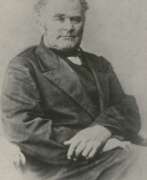

Timofey Yegorovich Myagkov (Russian: Тимофей Егорович Мягков) was a Russian iconographer and portrait painter, active during the 19th century. Born in 1811 and trained at the Moscow School of Painting, Sculpture and Architecture, Myagkov is celebrated for his significant contributions to Russian religious and secular art.
Myagkov's work spans from intricately painted icons to evocative portraitures, many of which were recognized for their depth and mastery during his time. Notable among his works is the "Family Portrait," which earned him a silver medal and is preserved in the Tretyakov Gallery. His murals and icons decorated several churches across Russia, some of which have survived to this day despite the country's turbulent history.
Many of Myagkov's works are housed in prestigious locations, such as the State Historical Museum in Moscow and the Tretyakov Gallery. His artistic legacy is marked by his ability to blend traditional Russian iconography with the more expansive techniques of portrait painting, making his works unique artifacts of Russian art history.
For those interested in exploring the rich tapestry of Russian art, keeping updated on exhibitions and auctions featuring Timofey Myagkov's work can be enriching. You can sign up for updates here [insert link], ensuring you don't miss out on new insights and opportunities related to this distinguished artist.
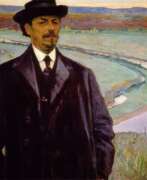

Mikhail Vasilyevich Nesterov (Russian: Михаи́л Васи́льевич Не́стеров), a distinguished Russian artist, was renowned for his unique contributions to the realms of painting and art, epitomizing the spiritual and cultural ethos of his era. Born into the vibrant milieu of pre-revolutionary Russia, Nesterov carved a niche for himself with his profound spiritual themes and innovative artistic techniques. His work, deeply rooted in Russian Orthodox traditions, reflects a meticulous blend of realism and symbolism, capturing the essence of Russian culture and spirituality.
Nesterov's artistry is celebrated for its ethereal quality, marked by a distinctive use of color and light to evoke a sense of divine presence. Among his most acclaimed works is the series on St. Sergius of Radonezh, a revered Russian saint, which not only showcases his technical prowess but also his ability to weave spiritual narratives into visual art. These pieces, housed in prestigious museums and galleries, continue to captivate art enthusiasts and collectors worldwide.
His legacy extends beyond his paintings, influencing generations of artists and imbuing Russian culture and art with a profound spiritual dimension. Nesterov's ability to transcend the mundane through his art renders his work timeless, making it a subject of study and admiration among experts in art and antiques.
For collectors and connoisseurs keen on exploring the rich tapestry of Russian art, Nesterov's oeuvre offers a window into the soul of Russia. We invite you to sign up for updates on new product sales and auction events related to Mikhail Vasilyevich Nesterov, ensuring you stay informed about opportunities to own a piece of this legendary artist's legacy. This subscription is your gateway to the world of art and culture, tailored specifically for those who appreciate the profound beauty and spiritual depth of Nesterov's work.


Pimen Nikitich Orlov (Russian: Пи́мен Ники́тич Орлóв) was a Russian painter renowned for his mastery in the Classical style, celebrated for his artistry across various genres throughout his predominant career in Italy. Born into a miller's family in 1812 near Malo-Foshchevaty, Orlov displayed an early aptitude for drawing, despite the financial challenges that initially hindered his artistic education. His persistence led him to apprentice under a traveling decorative painter, ultimately facilitating his formal studies at the Imperial Academy of Arts under the guidance of Karl Bryullov.
Orlov's works are distinguished by their delicate color treatment and effective lighting, capturing the essence of his subjects with a thorough finish. His portfolio predominantly features portraits and genre scenes reflective of Italian life, though he also ventured into historical subjects and landscapes. Notable works include "Young Roman Girl at the Fountain" and "Italian Morning," both of which were acquired by Emperor Nicholas I, underscoring the demand for his art in Russia.
Many of Orlov's paintings are housed in prestigious collections across Russia and the CIS, including the Tretyakov Gallery and the Tver Regional Picture Gallery, among others. His legacy continues to be celebrated, affirming his status as a significant figure in 19th-century Russian art.
For those interested in exploring the works of Pimen Nikitich Orlov or staying updated on sales and auction events featuring his art, signing up for our newsletter provides an excellent opportunity to connect with this classical master's enduring appeal.


Grigory Silovich Ostrovsky (Russian: Григорий Силович Островский) was an 18th-century Russian portrait painter, notable for his work in the Kostroma Governorate. Though much of his life remains shrouded in mystery, Ostrovsky is remembered for a collection of 17 signed and dated portraits discovered in the 1970s by art historian Savva Yamshchikov. These works, primarily painted in the 1770s and 1780s, were found at the Neronovo estate, associated with the Cherevin family.
Ostrovsky's artistic style suggests he may have been an itinerant painter and possibly received some training in icon painting. It is believed that he originated from Veliky Ustyug, a detail that adds to the enigmatic background of this artist. His works, including notable portraits such as those of Elizaveta Petrovna Cherevina and A. F. Catenin, are now housed in the Soligalich Regional Studies Museum in Soligalich.
For art enthusiasts and collectors, Ostrovsky’s works represent a fascinating facet of Russian portraiture, embodying the stylistic elements and cultural nuances of his time. To stay updated on exhibitions and sales featuring Grigory Silovich Ostrovsky’s works, sign up for our newsletter alerts specifically tailored for art collectors and connoisseurs.
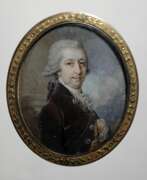

Augustin Christian Ritt was a Russian miniaturist born in 1765, known for his detailed and emotive portrait miniatures. Working primarily in the late 18th century, Ritt's artistry was distinguished by his ability to capture the nuances of his subjects' personalities in the confines of small ivory surfaces. His portraits often included prominent figures of Russian and European aristocracy, reflecting the social and cultural elite of his time.
Ritt's artworks, such as the portraits of Prince Alexei Borisovich Kurakin and Princess Natalia Iwanowna Kourakine, demonstrate his meticulous technique and his use of vibrant colors, which have made significant impacts on the art market. His pieces frequently fetch high prices at auctions, reflecting their historical value and the exquisite craftsmanship involved. For instance, his portrait of Prince Kurakin sold for a significant sum, highlighting the enduring demand for his work.
Collectors and experts in art and antiques appreciate Ritt's contribution to the field of miniature painting. His works are not only valuable for their artistic merit but also provide a window into the aesthetic preferences and cultural dynamics of his era. For updates related to new sales and auction events featuring Augustin Christian Ritt's works, sign up here. This subscription will keep you informed about opportunities to acquire pieces by this remarkable artist.


Fyodor Stepanovich Rokotov (Russian: Фёдор Степа́нович Ро́котов) was a distinguished Russian painter, celebrated for his profound contributions to the realm of portrait painting. Born into the 18th century, Rokotov emerged as a pivotal figure in Russian culture, art, and specifically in the development of Russian portrait painting. His ability to capture the essence of his subjects with both realism and sensitivity set a new standard in the art world, making him a beloved artist among collectors and experts alike.
Rokotov’s special features or merits lie in his exceptional skill in portraying the intricate nuances of the human face, coupled with his use of color and light to evoke a vivid presence of the subject. His works are known for their psychological depth and the dignified portrayal of his sitters, traits that have cemented his reputation as a master of portrait painting. Among his most renowned works, the portrait of Catherine II of Russia stands out as a testament to his skill and artistic vision.
Many of Rokotov's masterpieces grace the halls of prestigious museums and galleries, offering a glimpse into the rich cultural heritage of Russia. His paintings are not only significant for their aesthetic beauty but also for their historical value, providing insight into the social and cultural fabric of his time.
For collectors and art and antiques experts, the works of Fyodor Stepanovich Rokotov represent a valuable connection to the rich tapestry of Russian art history. His portraits are more than just depictions; they are windows into the soul of the 18th century, reflecting the elegance, complexity, and evolving culture of the period.
Stay abreast of the legacy of Fyodor Stepanovich Rokotov. Sign up for updates related to new product sales and auction events featuring the illustrious works of this iconic artist. Delve deeper into the world of art and antiques, and enrich your collection with pieces that speak volumes of history and sophistication. Subscribe now and ensure you never miss an opportunity to own a piece of Russian artistry.
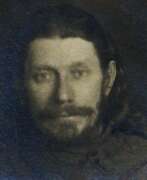

Alexander Alexandrovich Sakharov (Russian: Александр Александрович Сахаров) was an outstanding Russian artist known for his marine and battle paintings. Born in 1856, Sakharov studied at the Imperial Academy of Arts under the renowned Ivan Aivazovsky, which significantly influenced his work.
Sakharov became the first marine painter to work in the Russian Far East, creating works in the Shantar Islands, Blagoveshchensk, and Vladivostok. His paintings, such as "The Defense of Blagoveshchensk in 1900" and "The Battle of Chemulpo with the Varyag and Koreyets," are famous for their historical and realistic depictions of naval events.
Sakharov participated in the historic Northern Sea Route expedition on the icebreakers "Vaigach" and "Taimyr," which also inspired his artworks. His works continue to be exhibited in Russian museums and are highly valued by collectors.
If you want to learn more about Alexander Sakharov's art or purchase his works, subscribe to our updates. You will be the first to know about new arrivals and auction events related to this artist.
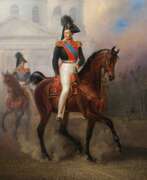

Alexander Schwabe (Russian: Александр Петрович Швабе) was a Russian painter known for his detailed and vivid hunting scenes and animal portraits. Born in 1824, Schwabe became a prominent artist of his time, specializing in depicting animals in their natural settings. His works often featured horses, dogs, and scenes of hunts, reflecting his deep passion for nature and wildlife.
Schwabe's career began with commissions from the Russian Imperial family, which significantly boosted his reputation. He painted numerous portraits of prized horses and hunting dogs for Emperor Nicholas I and other members of the aristocracy. His notable works include "Horses with a Shepherd and a Dog" (1850), "Deer Hunt in the Vicinity of Gatchina" (1860), and "Wolves Attacking a Herd of Horses" (1863). These pieces showcased his ability to capture the dynamic movement and energy of animals in action.
In addition to his paintings, Schwabe was recognized for his academic contributions. In 1861, he was appointed as a professor at the Imperial Academy of Arts, reflecting his influence and expertise in animal painting. His works were frequently exhibited in academic shows between 1844 and 1863, and many of his paintings are now housed in prestigious collections, such as the Tretyakov Gallery in Moscow and the Gatchina Palace.
For collectors and art enthusiasts, Alexander Schwabe's paintings offer a captivating glimpse into 19th-century Russian aristocratic life and their passion for hunting and nature. To stay updated on new sales and auction events related to Alexander Schwabe's works, sign up for our updates.
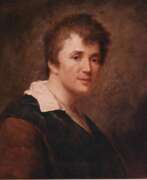

Stepan Semyonovich Shchukin (Russian: Степан Семёнович Щукин) was a distinguished Russian painter, celebrated for his refined portrait and watercolor artworks. Born in Moscow in 1754, Shchukin's artistic journey began under adverse circumstances, orphaned and admitted to the Orphan House in Moscow where he initially received his education.
Shchukin’s talent led him to the Imperial Academy of Arts, under the guidance of Dmitry Levitzky, one of the era's most esteemed Russian painters. His academic and artistic prowess earned him a scholarship to study further in Paris at the prestigious Académie de Peinture et de Sculpture, where he honed his skills with masters like Alexandre Roslin. Returning to Russia, Shchukin left a significant mark on the Russian art scene as a teacher at the Imperial Academy, influencing the next generation of artists including notable names like Alexander Varnek and Vasily Tropinin.
Among his notable works, Shchukin's portraits of eminent personalities like Emperor Paul I stand out. These portraits are not only masterpieces of art but also vital historical documents that capture the essence of an era. Shchukin's contributions to Russian art were profound, as he was integral in nurturing and shaping the aesthetic values of his time.
For collectors and experts in art and antiques, Shchukin's works represent a pivotal chapter in the evolution of Russian portraiture. His paintings, many of which are housed in prestigious galleries like the Russian Museum, continue to be studied and revered for their artistic and historical significance.
For updates on exhibitions and sales of Stepan Semyonovich Shchukin’s works, sign up for our newsletter. This subscription will keep you informed about the latest auction events and opportunities to acquire pieces by this illustrious artist.
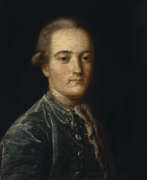

Mikhail Shibanov (Russian: Михаил Шибанов) was a Russian painter renowned for his contributions to the genre of portrait painting during the 1780s. His origins are humble; he was born into serfdom under the ownership of Prince Grigory Potemkin, with no definite records of his birth date available. Shibanov's artistic education took place at the Academy of Arts where he studied household painting from 1770 to 1780.
Shibanov's work primarily captured the life of peasants and Russian nobility through his realistic and genre paintings. Notably, he painted "Peasants' Meal" in 1774 and "The Celebration of the Wedding Agreement" in 1777. His mastery is exemplified in the portraits of significant historical figures, including the "Portrait of Count Alexander Dmitriev-Mamonov" from 1785, and the "Portrait of Empress Catherine II with Traveling Dress" created in 1787. These paintings are preserved in prominent Russian museums such as the Tretyakov Gallery and the Russian Museum.
Despite the limitations of his status and era, Shibanov's work left a lasting impression in Russian art history, embodying the characteristics of the Neoclassicism movement. His exact death date remains uncertain but is recognized as post-1798.
If you're captivated by the artistry and historical significance of Mikhail Shibanov, sign up for updates to stay informed about new findings, upcoming sales, and auction events featuring his work. This subscription ensures you remain connected to the fascinating world of Russian neoclassical art and Shibanov's lasting legacy. Subscribe today to enhance your collection and deepen your knowledge.
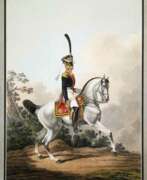

Samuel Petrovich Shiflyar (Russian: Самуил Петрович Шифляр) was a Russian painter, draughtsman, engraver, and lithographer, known for his significant contributions to portraiture and battle scenes. Born in 1786, Shiflyar initially worked for the Imperial Porcelain Factory, where he honed his skills in detailed and delicate artwork. He later joined the Military Topographic Depot of the Russian Imperial Army, where he produced numerous lithographs depicting military events and figures.
Shiflyar’s works are distinguished by their meticulous attention to detail, especially in military uniforms and battle scenes, making them valuable historical records. His piece "The Storming of Izmail" is particularly noted for its vivid depiction of the famous battle. Shiflyar's art provides a window into the military history of his time, combining artistic skill with historical accuracy.
Many of his works are housed in prestigious museums, reflecting their enduring value. Shiflyar’s pioneering efforts in lithography paved the way for future generations of Russian artists.
To stay updated on new product sales and auction events related to Samuel Petrovich Shiflyar, sign up for our newsletter.


Pyotr Ivanovich Sokolov (Russian: Пётр Иванович Соколов), born in 1753 and passing in 1791, was a remarkable Russian artist whose journey from serfdom to becoming an acclaimed painter is a testament to his extraordinary talent and resilience. Freed from servitude by Princess Galitzine at a tender age of ten, Sokolov's artistic prowess was nurtured at the Imperial Academy of Arts under the mentorship of Dmitry Grigoryevich Levitsky, a distinguished artist of his time. His dedication to art was recognized early on when he received a small gold medal for his painting "Vladimir and Rogneda" in 1770, followed by a significant accolade, a large gold medal, in 1772 which led to his studies abroad funded publicly.
Sokolov's contributions to Russian art are particularly noted for his historical paintings, a genre he excelled in due to his classical training and the influence of his mentors. Among his notable works are "Mercury and Argus" and "Daedalus binds the wings of Icarus," which earned him the title of academician upon his appointment in 1778. His painting "Venus and Adonis" further solidified his academic position. Sokolov was not only a talented artist but also a dedicated educator, teaching historical painting at the Academy from 1780 and being elevated to the rank of associate professor in 1785.
Despite his early death, Sokolov's legacy lives on through his contributions to the eclectic direction of Russian painting, a path charted by his predecessor A. Losenko. His works, which showcase great talent and classical mastery, continue to be celebrated in Russian art history. Sokolov's life and career highlight the transformative power of art and education, proving that talent, once nurtured, can transcend social and economic barriers to leave a lasting impact on the world.
For collectors and experts in art and antiques, Sokolov's works offer a glimpse into the evolution of Russian historical painting and the classical traditions that influenced it. His story is a reminder of the profound impact that art can have on individual lives and society at large.
Stay updated on new discoveries, sales, and auction events related to Pyotr Ivanovich Sokolov by signing up for updates. This subscription is your gateway to the world of a legendary artist whose works continue to inspire and captivate art lovers around the globe.


Pyotr Fyodorovich Sokolov (Russian: Пётр Фёдорович Сóколов) was a Russian artist, prominent for his mastery in aquarelle portrait painting during the Pushkin era. Born in Moscow in 1787, Sokolov was a trailblazer in Russian watercolor portraiture, a technique he refined to capture the essence and subtleties of his subjects with notable delicacy and expressive linearity. His education at the Imperial Academy of Arts laid the groundwork for his artistic career, where he developed his unique style that resonated throughout his prolific output of over 500 works.
Sokolov's portraits are cherished for their historical and artistic value, depicting many key figures of his time including the likes of Alexander Pushkin. His innovative use of watercolor, often enhancing his pieces with graphite for depth, set a new standard in Russian art, moving away from the heavier oil paints and traditional techniques used by his contemporaries. His works are now housed in prestigious institutions like the State Russian Museum and the Tretyakov Gallery, ensuring his legacy persists.
For enthusiasts and collectors, keeping abreast of exhibitions and auctions featuring Sokolov’s works is essential. Sign up for updates related to Pyotr Fyodorovich Sokolov to stay informed about new discoveries and sales of his art. This subscription service focuses exclusively on bringing you news from the art world that pertains directly to Sokolov’s enduring legacy.
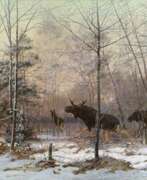

Evgeny Alexandrovich Tikhmenev (Russian: Евгений Александрович Тихменев) was a Russian artist, born in 1869 and passed away in 1934. Renowned for his depictions of natural scenes and hunting expeditions, his works encapsulate the essence of rural Russian life during his time. Tikhmenev's artwork, such as "Before the Hunt," captures moments of anticipation and interaction with nature, often featuring meticulous detail and vibrant settings.
His pieces are cherished in art circles for their historical value and their ability to convey the story of an era when hunting was not only a sport but a significant aspect of rural survival and culture. Notably, Tikhmenev's paintings have been sold at various auctions, with some pieces fetching substantial prices, highlighting their desirability among collectors and art enthusiasts.
For collectors and experts in art and antiques, Tikhmenev's works present a valuable investment, both culturally and financially. To stay updated on new sales and auction events featuring Evgeny Alexandrovich Tikhmenev’s work, signing up for timely updates is recommended, ensuring enthusiasts don't miss out on acquiring a piece of Russian art history.


Vasily Andreevich Tropinin (Russian: Василий Андреевич Тропинин) was a Russian Romantic painter, whose journey from serfdom to artistic freedom is as captivating as his art. Born in 1776, Vasily Tropinin spent a significant part of his life as a serf, only gaining freedom at the age of 47. His talent in painting, particularly in portraying intimate, personal, and "disheveled" portraits, earned him the nickname "a robe portraitist" among Muscovites.
Vasily Tropinin's works are celebrated for their deep analysis of the Russian national character and their reflection of the social types of his era. Notable works include "The Lace Maker," "Portrait of Alexander Pushkin," and portraits of everyday people, capturing the essence of Russian life with authenticity and emotional depth.
His contributions to Russian art did not go unnoticed, as he was awarded the title of "appointed academician" and later elected an Academician, reflecting his status as a respected artist of his time. Vasily Tropinin's legacy lives on, with more than 3,000 portraits credited to his name, and the Tropinin Museum in Moscow dedicated to his and his contemporaries' works.
For collectors and experts in art and antiques, Tropinin's paintings offer a unique window into 19th-century Russian life and culture. To stay informed about updates related to Vasily Andreevich Tropinin, including sales and auction events, consider signing up for updates, ensuring you remain connected to the rich heritage of Russian art.


Grigory Ivanovich Ugryumov (Russian: Григорий Иванович Угрюмов) was a celebrated Russian portrait and history painter, acclaimed for his contributions to the Classical style of art. Born on May 11, 1764, in Moscow, Ugryumov was the son of a merchant from Yaroslavl Oblast. His educational journey began in 1770 at the Imperial Academy of Arts, where he was mentored by notable figures such as Ivan Akimov. His exceptional talent was recognized early on when he was awarded a gold medal in 1785 for his painting of Hagar and Ishmael in the desert. This accomplishment led to a fellowship in Italy, where he further honed his skills by studying works by Paolo Veronese and Guido Reni.
Upon his return, Ugryumov dedicated his career to teaching and became a vital part of the Academy, eventually rising to the position of rector of history painting by 1820. He enjoyed the favor of several Tsars and Tsarinas, contributing major works to significant sites like the Trinity Cathedral of Alexander Nevsky Monastery and Kazan Cathedral. His influence extended beyond his artworks, as he was a pivotal figure in the education of many renowned artists like Andrey Ivanovich Ivanov and Orest Kiprensky, earning him the title of "father of historical painting" in Russia.
Ugryumov's legacy is marked by his commitment to Russian themes and historical accuracy within his paintings, traits that significantly impacted his contemporaries and future generations of artists. His pursuit of historical verisimilitude and the portrayal of national pride through art were distinctive features of his work, making him a central figure in Russian art history. Notable works include "Hagar and Ishmael in the Desert," "Alexander Nevsky in Pskov after his victory over the Germans," and "The Capture of Kazan by Ivan the Terrible," which continue to be celebrated for their artistic and historical significance.
For collectors and experts in art and antiques, Ugryumov's works represent an invaluable connection to Russian history and classical art. His paintings are not just visual spectacles but narratives of Russia's past, rendered with a fidelity to historical detail and a profound emotional depth. To stay updated on sales and auction events related to Grigory Ivanovich Ugryumov's work, signing up for updates is a step towards embracing the rich heritage of Russian classical painting.


Alexander Gregoryevich Varnek (Russian: Александр Григорьевич Варнек) was a distinguished Russian painter. Known primarily for his portraits, Alexander Varnek captured the essence of figures in Russian society with a finesse that made him a notable artist of his time. He was a student under the guidance of Dmitry Levitzky and Stepan Shchukin at the Imperial Academy of Arts, where he later returned as a professor and advisor.
Alexander Varnek's artistry was celebrated for its masterful drawing, harmonious coloring, and the ability to capture close resemblances and appropriate lighting in his portraits. His conscientious execution and avoidance of embellishment in his works earned him high regard among contemporaries. Some of his notable works include portraits of Madame Khatova, Count Alexander Stroganov, and Alexey Olenin, along with other subjects like "Head of a Young Turk" and "Boy with Dog".
His life was intrinsically linked to St. Petersburg and the Imperial Academy of Arts, reflecting a career that spanned teaching, creating, and contributing significantly to Russian art. Alexander Varnek's journey included a period spent abroad in Rome, where he further honed his craft, leaving behind a legacy encapsulated in his portraits and other artworks that continue to be celebrated in the world of art.
For collectors and experts in art and antiques, Alexander Grigorievich Varnek's body of work offers a glimpse into the rich tapestry of Russian portraiture and its evolution during his lifetime. To delve deeper into his life and explore his creations, consider signing up for updates related to Varnek and stay informed about exhibitions, sales, and auctions of his works.
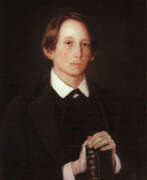

Apollinariy Mikhailovich Vasnetsov (Russian: Аполлина́рий Миха́йлович Васнецо́в) was a distinguished Russian painter and architect, celebrated for his pivotal role in bridging the realms of historical and landscape painting with a unique artistic vision. Born into a family with a deep artistic lineage, Vasnetsov's work was heavily influenced by Russian culture, history, and the natural landscape, which he depicted with a meticulous attention to detail and a vivid imagination. His specialization in creating historically accurate and vividly imagined views of ancient Russia set him apart from his contemporaries and solidified his status as a key figure in the Russian art world.
Vasnetsov's oeuvre is notable for its dedication to showcasing the beauty and complexity of Russia's past. His paintings often feature medieval and ancient Russian cities, imbuing them with a sense of romanticism and nostalgia. Among his most renowned works are his breathtaking views of the old Moscow, which are celebrated for their historical accuracy and atmospheric depth. These pieces not only offer a window into the past but also reflect Vasnetsov's profound love and understanding of Russian history. His works are housed in prestigious museums and galleries across Russia, serving as a testament to his lasting impact on the art world.
For collectors and experts in art and antiques, Vasnetsov's work represents a unique investment in Russian culture and heritage. His ability to weave together historical accuracy with artistic beauty makes his paintings highly sought after. We invite enthusiasts and collectors to stay informed on new discoveries, product sales, and auction events related to Apollinariy Mikhailovich Vasnetsov's work by signing up for updates. This subscription is your gateway to the latest offerings and opportunities to add a piece of Russian history and culture to your collection.
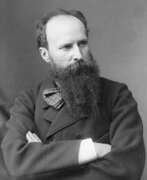

Vasily Vasilievich Vereshchagin (Russian: Васи́лий Васи́льевич Вереща́гин) was a Russian painter, known for his poignant and realistic depictions of war. He was born in 1842 in Cherepovets, Russia, and is celebrated for his dramatic and often controversial paintings that depicted the brutal realities of warfare.
Vereshchagin’s work stands out for its unflinching portrayal of the human cost of conflict. Unlike many of his contemporaries, he focused on the devastating consequences of war rather than glorifying it. His series of paintings from the Russo-Turkish War and his iconic piece, "The Apotheosis of War," are housed in prestigious institutions like the Tretyakov Gallery in Moscow and the Russian Museum in Saint Petersburg.
Collectors and art experts value Vereshchagin’s works for their historical significance and emotional depth. His paintings not only serve as powerful artistic statements but also as historical documents that provide insight into the wars of his time. For those interested in acquiring or learning more about Vereshchagin’s works, subscribing to updates about upcoming sales and auction events can be incredibly valuable.
Sign up to receive updates on new product sales and auction events related to Vasily Vasilievich Vereshchagin.
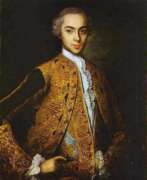

Ivan Yakovlevich Vishnyakov (Russian: Ива́н Я́ковлевич Вишняко́в) was a distinguished Russian artist, celebrated for his contributions to painting. As a prominent figure in the realm of culture and art, Vishnyakov's works are a testament to the rich tapestry of Russian heritage, bridging the gap between tradition and innovation in the art world.
Vishnyakov specialized in painting, bringing scenes of Russian life, portraiture, and religious themes to life with a vibrancy and detail that was unparalleled in his time. His ability to capture the essence of his subjects made him a favored artist among the Russian nobility and the Orthodox Church. Vishnyakov's paintings are known for their depth, realism, and emotional expressiveness, qualities that have ensured his lasting legacy in the world of art.
Several of Vishnyakov's masterpieces are housed in prestigious museums and galleries, offering art lovers and collectors a glimpse into the soul of 18th-century Russia. His works not only reflect the aesthetic sensibilities of the period but also provide valuable insights into the cultural and societal norms of his time.
For collectors and experts in art and antiques, Vishnyakov's oeuvre represents an invaluable link to Russia's artistic past. His contributions to painting and sculpture continue to inspire and captivate audiences, underscoring the timeless appeal of his art.
To stay informed about new product sales and auction events featuring works by Ivan Yakovlevich Vishnyakov, we invite you to sign up for updates. This subscription is your gateway to exploring the exquisite beauty of Russian art and ensuring you never miss an opportunity to enrich your collection with pieces of significant historical and cultural value.
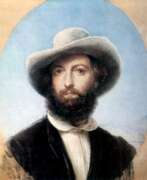

Otto Friedrich Theodor Möller (Russian: Фёдор Антонович Моллер), a Russian academic painter of Baltic-German descent, was renowned for his detailed and expressive portraits, figure paintings, and genre scenes. Born in 1812 in Kronstadt, Saint Petersburg, Möller was deeply influenced by his mentor, Karl Briullov, at the Imperial Academy of Fine Arts. His journey as an artist was marked by a successful tenure in Italy, where he embraced the vibrant local culture and further honed his skills, particularly in portraying everyday Italian life and historical narratives .
Möller's artworks are celebrated for their clarity of composition and expressive color palette, traits he mastered under Briullov's guidance. His notable works, like the portrait of Nikolai Gogol, are admired for their lifelike representation and emotional depth. These paintings not only showcase his technical skill but also his ability to capture the subtle nuances of his subjects' personalities.
Möller's contributions to Russian art extend beyond his paintings. He was a professor and a significant figure at the Imperial Society for the Encouragement of the Arts, dedicating much of his later years to teaching and supporting fellow artists. His works are held in high esteem and continue to be featured in major Russian museums, including the Tretyakov Gallery and the Russian Museum.
For collectors and enthusiasts wishing to stay updated on exhibitions and auction events featuring Otto Friedrich Theodor Möller's works, signing up for newsletters and alerts from relevant art institutions can be highly beneficial. This ensures that you remain informed about opportunities to view or purchase his esteemed works.
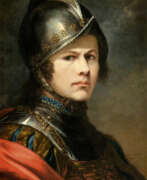

Feodosy Ivanovich Yanenko (Russian: Феодосий Иванович Яненко) was a Russian artist born in 1762 and notable for his contributions to religious and portrait painting. Trained at the Imperial Academy of Arts under Gabriel Ignatievich Kozlov, Yanenko's talent was recognized early in his career. In 1795, he was assigned to the Academy for his studies of the naked human figure, and by 1797, his painting "Travellers in a Storm" earned him the rank of academician.
Yanenko is best known for his religious artworks, including several images for the Kazan Cathedral in St. Petersburg. His prowess in portrait painting is exemplified by his work housed in the Tretyakov Gallery, Moscow—a portrait of Emperor Paul I when he was Crown Prince, painted in 1798.
His works are cherished for their historical significance and artistic quality, making them of great interest to collectors and art historians alike. For those passionate about Russian art from the late 18th century, Yanenko's contributions remain an essential part of the discussion.
For updates related to new product sales and auction events featuring Feodosiy Ivanovich Yanenko's works, consider signing up for our newsletter. This subscription will keep you informed about all the latest developments and opportunities to acquire pieces by this distinguished artist.


Alexei Yegorovich Yegorov (Russian: Алексей Егорович Егоров) was a renowned Russian painter, draftsman, and professor of history painting. Known for his work in monumental and religious painting, Yegorov's journey in the arts began under challenging circumstances as he was captured by Cossacks in his childhood and placed in a Moscow orphanage. His talent was recognized early on, leading to his education at the Imperial Academy of Arts in St. Petersburg, where he studied under esteemed professors and earned multiple awards for his exceptional skills.
Alexei Yegorov's career blossomed further during his stay in Rome from 1803 to 1807, where he was influenced by and collaborated with prominent artists of the time. His works gained significant recognition, earning him the affectionate nickname "Russian Bear" for his formidable stature and exceptional artistic talents. Despite an offer to stay in Italy as a court painter by Pope Pius VII, Yegorov chose to return to Russia, where he achieved notable success as an academician and a professor at the Imperial Academy of Arts.
His contributions to Russian art are vast, encompassing religious and historical themes. Yegorov's works include paintings for the Kazan Cathedral, the Tauride Palace, and various other significant locations. His mastery in drawing was particularly praised, with a style marked by elegance and expressiveness. Despite facing dismissal from the academy later in his career due to the displeasure of Emperor Nicholas I, Yegorov continued to influence the Russian art scene, advising young artists and working on his projects until his last days.
For collectors and art experts, Alexei Yegorov's legacy offers a deep well of Russian classicism and academic art to explore. His works, residing in museums like the State Russian Museum and the Tretyakov Gallery, continue to inspire and captivate audiences, showcasing the depth and breadth of his artistic prowess.
If you're intrigued by the life and works of Alexei Yegorovich Yegorov and wish to stay informed about related updates, consider subscribing for notifications on new findings, sales, and auction events concerning his artworks.
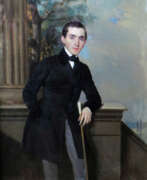

Pyotr Zakharovich Zakharov-Chechenets (Russian: Пётр Захарович Захаров-Чеченец), a Russian painter of Chechen origin, was a notable artistic figure in the 19th century. Born in 1816, he was adopted by Major-General Pyotr Yermolov and showed early talent in painting, which led him to the Imperial Academy of Arts in Saint Petersburg. Despite facing significant obstacles, including racial discrimination that barred him from receiving a scholarship to study in Italy, Zakharov excelled at the Academy and graduated in 1835 with a diploma of Free Artist.
Zakharov became a prominent portraitist, attracting the patronage of significant figures, including the favorite daughter of Nicholas I, Grand Duchess Maria Nikolayevna. His works, known for their expression and depth, include notable portraits such as that of Aleksey Petrovich Yermolov in 1842, which earned him membership in the Academy of Arts. His pieces were highly regarded and are held in prestigious collections, including the Tretyakov Gallery and the Russian Museum.
Tragically, Zakharov's life was cut short by tuberculosis, passing away in 1846 shortly after his marriage. His legacy, however, continues to be celebrated, with his art significantly featured in collections and studies concerning Russian artists of his era. His work not only highlights his artistic skill but also serves as a testament to his resilience against the societal challenges of his time.
For those interested in the profound work and enduring influence of Pyotr Zakharov-Chechenets, updates on exhibitions and sales can be subscribed to, ensuring enthusiasts and collectors stay informed on available works and new discoveries related to this distinguished artist.
